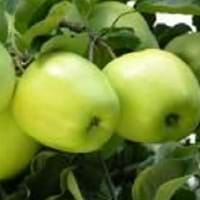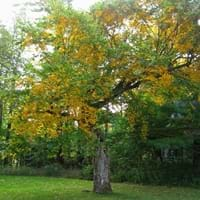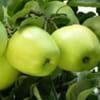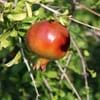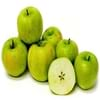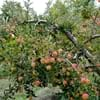Life Span
Annual
Perennial
Origin
Eastern Europe, Southern Europe, Russia/Siberia, Southern Asia, Western Asia
Northeastern United States, Mid-Atlantic United States, North-Central United States, Central United States, Canada
Types
Jonathan apple, fuji apple
it is a type of birch
Number of Varieties
Not Available
Habitat
Cold Regions, gardens
Hillside, Mountain tops
USDA Hardiness Zone
4-8
4-7
Sunset Zone
1a, 1b, 2a, 2b, 3a, 3b, 4, 5, 6, 7, 8, 9, 14, 15, 16
A3, 1a, 1b, 2a, 2b, 3a, 3b, 4, 5, 6, 7, 14, 15, 16
Habit
Oval or Rounded
Pyramidal
Flower Color
White, Pink
Light Yellow, Light Green
Flower Color Modifier
Bicolor
Bicolor
Fruit Color
Yellow, Yellow green
Bronze, Sandy Brown
Leaf Color in Spring
Green
Green, Dark Green
Leaf Color in Summer
Green
Dark Green
Leaf Color in Fall
Green, Light Yellow, Brown
Yellow
Leaf Color in Winter
Light Green
Not Available
Plant Season
Spring, Fall
Spring, Summer, Fall, Winter
Sunlight
Full Sun, Partial Sun, Partial shade
Full Sun, Partial Sun
Growth Rate
Medium
Medium
Type of Soil
Clay, Loam, Sand
Clay, Loam
The pH of Soil
Acidic, Neutral
Acidic, Neutral
Soil Drainage
Well drained
Average
Bloom Time
Early Spring, Spring
Early Spring
Tolerances
Rocky Soil, Shade areas
Not Available
Where to Plant?
Ground
Ground
How to Plant?
Grafting, Seedlings, Stem Planting
Seedlings
Plant Maintenance
Medium
Medium
Watering Requirements
Do not let dry out between waterings, Never Over-water, Use Mulches to help prevent water loss during hot and windy weather
Average Water Needs, Do Not over Water
In Summer
Alternate Days
Lots of watering
In Spring
Moderate
Moderate
In Winter
Less Watering
Average Water
Soil pH
Acidic, Neutral
Acidic, Neutral
Soil Type
Clay, Loam, Sand
Clay, Loam
Soil Drainage Capacity
Well drained
Average
Sun Exposure
Full Sun, Partial Sun, Partial shade
Full Sun, Partial Sun
Pruning
Prune central stem, Remove lateral branches
Prune to half of its height
Fertilizers
Apply 10-10-10 amount, fertilize in growing season, Fertilize the soil before planting
All-Purpose Liquid Fertilizer, fertilize twice a year
Pests and Diseases
Bacterial Blight, Bacterial Canker, Leaf rust, Red blotch, Ring Rot, Woodpecker feeding
Borers, Chlorosis
Plant Tolerance
Rocky Soil, Shade areas
Not Available
Flowers
Showy
Insignificant
Flower Petal Number
Single
Not Available
Fragrant Bark/Stem
No
Yes
Foliage Texture
Medium
Medium
Foliage Sheen
Matte
Matte
Attracts
Bees, Butterflies, Hummingbirds, Insects
Not Available
Allergy
Peripheral Edema, Vomiting
Respiratory problems, Skin rash
Aesthetic Uses
Cottage Garden, Showy Purposes
Landscape Designing, Showy Purposes
Beauty Benefits
Acne, For treating wrinkles, Improve skin tone, Moisturizing, Stops hair loss
Not Available
Environmental Uses
Food for animals, Shadow Tree, soil stabilisation, Windbreak
Air purification, Shelter for wildlife
Medicinal Uses
Acne, Alzheimer’s Disease, Anemia, constipation, Gastrointestinal disorders, Hair Loss, Parkinson
No Medicinal Use
Part of Plant Used
Fruits
Bark, Sap
Other Uses
Acts as a natural source of rain water for birds and insects., Cosmetics, Used As Food
Edible syrup, used for making charcoal, Used for making wood alcohol, Used in Furniture
Used As Indoor Plant
No
No
Used As Outdoor Plant
Yes
Yes
Garden Design
Edible, Feature Plant, Fruit / Fruit Tree
Feature Plant, Shade Trees
Botanical Name
MALUS domestica 'Ginger Gold'
BETULA alleghaniensis
Common Name
Apple, Ginger Gold Apple, Yellow Eating Apple
Yellow Birch
In Hindi
सुनहरा सेब
Yellow Birch
In German
goldener Apfel
Yellow Birch
In French
pomme d'Or
bouleau jaune
In Spanish
manzana dorada
Abedul amarillo
In Greek
χρυσό μήλο
κίτρινο Birch
In Portuguese
maçã Dourada
κίτρινο Birch
In Polish
złote jabłko
żółte brzozy
In Latin
aureum pomum
Birch flavum
Phylum
Magnoliophyta
Magnoliophyta
Class
Magnoliopsida
Magnoliopsida
Family
Rosaceae
Betulaceae
Clade
Dicotyledonous, Rosids
Not Available
Tribe
Not Available
Not Available
Subfamily
Not Available
Not Available
Number of Species
Not Available
Not Available
Season and Care of Ginger Gold Apple and Yellow Birch
Season and care of Ginger Gold Apple and Yellow Birch is important to know. While considering everything about Ginger Gold Apple and Yellow Birch Care, growing season is an essential factor. Ginger Gold Apple season is Spring and Fall and Yellow Birch season is Spring and Fall. The type of soil for Ginger Gold Apple is Clay, Loam, Sand and for Yellow Birch is Clay, Loam while the PH of soil for Ginger Gold Apple is Acidic, Neutral and for Yellow Birch is Acidic, Neutral.
Ginger Gold Apple and Yellow Birch Physical Information
Ginger Gold Apple and Yellow Birch physical information is very important for comparison. Ginger Gold Apple height is 370.00 cm and width 460.00 cm whereas Yellow Birch height is 1,680.00 cm and width 760.00 cm. The color specification of Ginger Gold Apple and Yellow Birch are as follows:
Ginger Gold Apple flower color: White and Pink
Ginger Gold Apple leaf color: Green
Yellow Birch flower color: Light Yellow and Light Green
- Yellow Birch leaf color: Green and Dark Green
Care of Ginger Gold Apple and Yellow Birch
Care of Ginger Gold Apple and Yellow Birch include pruning, fertilizers, watering etc. Ginger Gold Apple pruning is done Prune central stem and Remove lateral branches and Yellow Birch pruning is done Prune to half of its height. In summer Ginger Gold Apple needs Alternate Days and in winter, it needs Less Watering. Whereas, in summer Yellow Birch needs Lots of watering and in winter, it needs Average Water.
